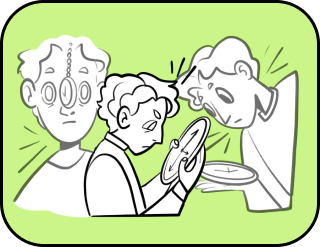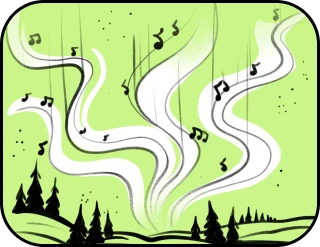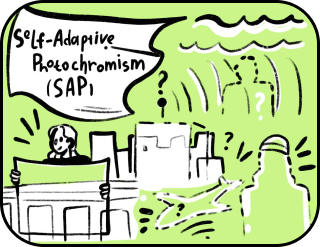Category: Life technologies
Becoming a magician
“The best trick is the one
that makes your heart beat faster,
even when your mind knows the secret.”
James Randi
As children, we watched mesmerized as magicians’ hands moved swiftly, trying to figure out where the coin disappeared, how a dove appeared in a silk scarf, or a rabbit popped out of a hat. Magicians always made everything look easy: coins vanished into thin air, cards seemed to predict themselves, and milk turned into wine. Their tricks often seemed incomprehensible; touching their world was an unattainable dream. But dreams come true sooner or later.
Welcome to the place where fingers lie better than politicians, and scarves hide more secrets than social media accounts.
Traditionally, we offer you two paths: the usual-life one based on sleight of hand and age-old secrets—and the technological one—where science and gadgets take center stage.
If you really want to make a splash and get your friends’ hearts pounding, a trick with a torn-off finger is perfect. You’ll need fingers on your hand, confidence, a bit of acting skill (“Oscar” in your pocket will be an advantage), a silk scarf, and a spare finger.
To perform the torn-off finger trick, first decide which finger will “suffer” during the show. Usually, the thumb or index finger takes part because they are most noticeable.
Face the audience, adopt a mysterious look, and skillfully demonstrate your fingers. Cover the chosen finger with the scarf and then quickly move the fabric away. The audience will surely applaud because your finger will appear to have disappeared—or rather, be lying separately from your hand.
Of course, the finger isn’t actually torn off. Instead, you use a prosthetic or a cleverly hidden dummy that you swap for your real finger hidden inside the scarf. To add excitement, you can squeeze some tomato juice onto the “torn” finger for extra effect.
At the end of the trick, you can restore the “victim” finger to its place. You might make it “grow back” with a mysterious spell, a magic wand, or strong glue.
Floating Pen
Take a wristwatch or a smart bracelet, attach a small pen or pencil to the strap using tape. Place the pen on the table, bring your hand with the watch close to it, and make the audience believe that the ballpoint pen is levitating. The secret of this trick lies in skillfully pinning the pen between your palm and the pencil attached to the strap.
Your task is to keep the secret hidden, move smoothly, speak in a mysterious voice, and pretend you are controlling telekinesis. The audience will definitely be amazed—your distraction and the element of surprise will do their job.
Sleight of Hand and No Cheating
This trick is for true illusionists. You’ll need a coin and a bit of acting skill.
Show the coin to the audience, transfer it from one hand to another, perform mysterious passes in the air so that the coin disappears from sight. Usually, magicians keep the coin in one hand—say, the right—and all manipulations are just clever visual tricks to distract viewers. Make them believe that the coin vanishes. Focus their attention elsewhere—adjust your glasses, scratch your nose, yawn. While they’re watching your gestures, skillfully hide the coin in your palm.
Experienced magicians recommend using old coins—their ridged edges make manipulations easier.
Card Tricks
What’s a performance without a deck of cards? Show the audience a six of diamonds, cover it with a scarf or your other hand, and say any magic spell. Poof—now it’s an Ace of Hearts.
The secret of this trick lies in glued-together cards. First, you show one side to the audience, then the other. The spectator will think they saw only one card; in reality, their brain remembers extra information—like the thickness of the card’s edge. Visual memory is selective—especially under magical “boom!”
For an experienced viewer, you can perform another trick: place any card in the middle of the deck, snap your fingers, and then reveal that the top card has changed completely. Spectators might think you’re not fully skilled at illusions—but that’s exactly what you want. Shake the deck so that this revealed card jumps out onto the table—that’s when your trick works.
The secret of the jumping card is that it’s not fully inserted into the deck: its corner peeks out curiously and waits for its moment. When you shake or flicker the deck, friction causes this corner to catch on neighboring cards and pop out while the rest stay intact.
You are a magician—and of course, you don’t make mistakes. Your so-called “failures” and theatrical shaking simply lower spectators’ guard. Their brains relax and think: “Oh, just another silly trick.” This rule is called “lulling vigilance with triviality.”
To make your fingers more agile, practice regularly and refine subtle movements in front of a mirror. If you don’t see your own movements clearly, viewers won’t see them either.
To make a card fly up magically, attach a transparent fishing line to it discreetly. A hidden pocket in your jacket is perfect for coins, candies—and excuses like “I didn’t eat the cookie; I hid it in my pocket.”
How to Sell a Fail to the Audience
A trick without charisma is like a steak without sauce: without it, any illusion loses its color and emotional impact.
If a card accidentally falls during your performance, you can say, “This one is thanking the ground for the magic.” You could also blame the full moon if something goes wrong. If an inquisitive spectator suspects foul play, redirect their attention with a sudden question: “By the way, do you know your shoelaces are untied?”
Becoming a magician is all about learning to laugh at failures and turning mistakes into a spaghetti of illusions. Even the great Houdini started by losing the keys to his handcuffs, then pretending it was all part of the act.
If, in a trick involving a torn finger, it still refuses to stick back on, you can use it for your “Living Mannequin” show. Of course, you’ll need to find a mannequin at the store and come up with a new routine. When creating illusions, the key ingredients are props, acting skills, and the art of shifting attention from big movements to small details.
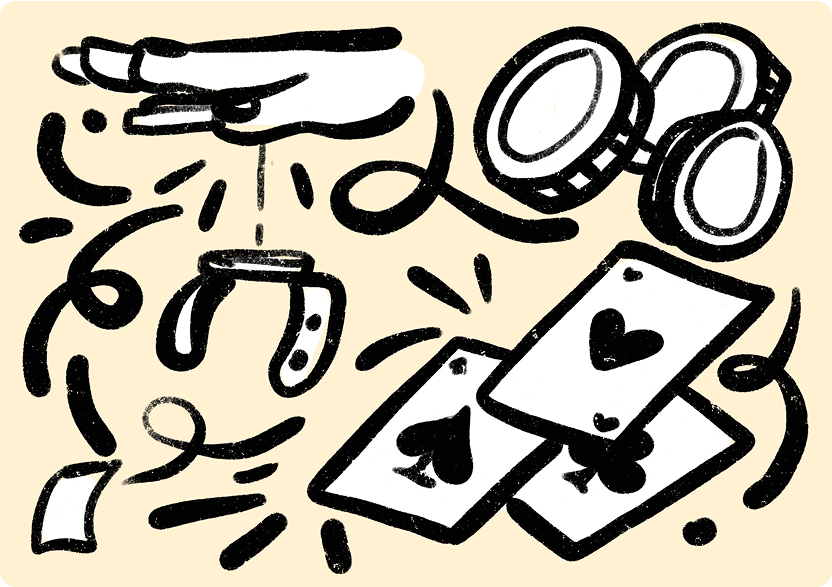
Modern technology has also entered the world of magic: classic disappearing coins no longer impress anyone. Now we dream of flying elephants, holograms of Elon Musk, and AR unicorns dancing on spectators’ palms. Forget dusty suitcases and sleight of hand—your main tool now is a microcontroller, and your spells are lines of code.
Floating Rubik’s Cube
Dim the lights, wave your hand mysteriously, say “Sim-salabim,” and suddenly a glowing Rubik’s Cube appears floating in mid-air. It spins easily with your fingertips. Then—snap!—it vanishes into darkness. The audience’s jaws are already on the floor.
To pull this off, you need a smartphone or tablet and a transparent plastic or glass pyramid without its top. Then search online for videos labeled “hologram video,” “holographic illusion,” or “pyramid hologram”—pick one where four identical images are arranged in a circle.
Next, turn off the lights and place the pyramid exactly in front of your screen’s center. Soon, a 3D-like image of the Rubik’s Cube will appear inside it—almost alive. It’s not quite Star Wars holography but looks stunning.
The secret lies in optics: the pyramid’s faces reflect the video so that it appears as if a 3D object is floating inside. A small trick combined with technology turns any trick into an awe-inspiring show.
Virtual Plants from Empty Hands
Grow a garden or flowers in your palms using augmented reality (AR). Recognizing your hands’ position can be done with AR SDKs (ARKit/ARCore), Spark AR platforms, or Effect House—they’ll animate your hands with digital plants.
Here’s the trick itself: point your camera at your hands, open one of these apps, and watch as virtual flowers bloom or tiny trees sprout in your palms—amazed spectators along with you. You can create entire virtual gardens; just make sure there’s enough space on your hands.
The Chameleon Puzzle by Big Brother
Why not visit the London Magic Shop? Instead of rabbits or hats, get yourself an intriguing puzzle that defies reality.
Then invite your audience to assemble this puzzle. Nothing difficult.But next time they do it, it will form an entirely different picture.
What makes these puzzles special is that each time you reassemble them using only about 70% of the pieces; yet the picture remains perfect. The neural network behind them pre-calculates deception geometry so each piece contains fragments of multiple images. The clever algorithm optimizes corner shapes so they fit into two configurations; color gradients blend into new images when flipped. The size of gaps is universal; extra pieces are seamlessly excluded or replaced each time.
Telepathy in 3 Clicks
More experienced spectators can be amazed with a deck of cards and telepathy. Offer the audience member to think of any card, but to make the trick work right, find out the suit color first. Then, take out your phone and display the screen: it will show the chosen card with an animation of black flames.
This trick is made possible by the Phoney app — it uses a special deck organization and remembers its exact arrangement. The cards are grouped in such a way that answers “yes” or “no” lead to the correct card.
The Digital Magician in Your Backpack
Forget about disappearing objects in cabinets, pulling scarves from your sleeve, or flying rabbits. A tablet acts as a portal into the Looking Glass, blurring the line between reality and the future.
Hand out markers to your audience and ask them to draw any object. Then announce that right before their eyes, all their drawings will come to life.
Import all images into Adobe Aero, an augmented reality content creation app. It helps give your drawings a third dimension and transforms any object into a playful 3D character.
You can also use apps like Create AR to analyze drawings, recognize their content, and breathe realistic animation and holograms into them.
Portal to Another Reality
You can end your performance with a journey into another dimension alongside your audience. After all the tricks and applause, behind you, space distorts — a portal appears, from which enormous, graceful whales are floating. Amazing, right?
This effect is achieved through augmented reality technology. To pull it off, you’ll need a dark room, a lamp to set the mood, and pre-installed apps like Wonderscope or Just a Line. In Wonderscope, select the “Space Whale” scene, point your camera at the audience—and any 3D object will materialize right on stage.
The secret lies in SLAM (Simultaneous Localization and Mapping) technology. It allows the app to scan your environment, create a 3D map of the space, and reliably attach virtual objects to real surfaces.
To create a “wow” effect, involve your audience: let volunteers step aside—the animated object will first approach them, then smoothly return to the portal and disappear with a thunderous splash sound.
While technology can never replace charisma or skill as a magician, it gives performers digital wings. If you’re ready to go further—mixing art with imagination, incorporating principles of optics, friction forces, and clever machine learning algorithms—you’ll become a worthy rival to the greatest illusionists.
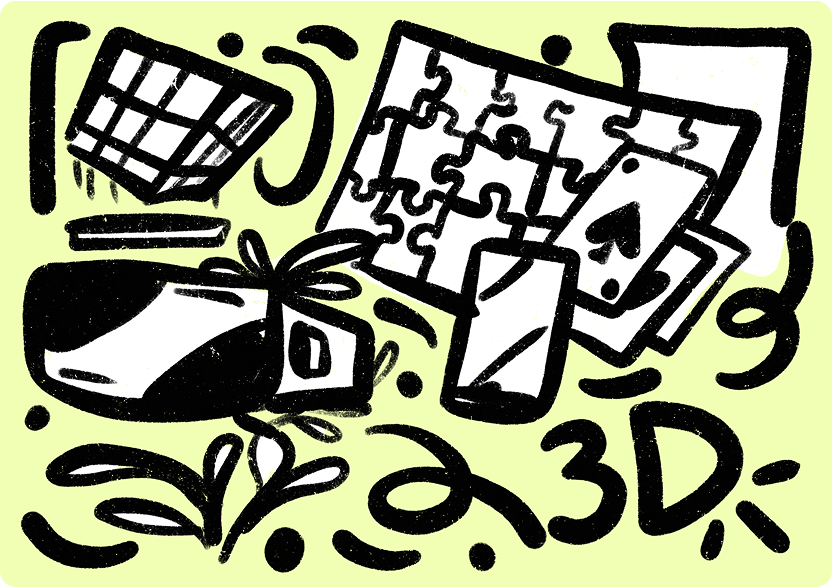
Is there life on Mars, or is there no life on Mars? Join the eternal debate on paradoxes!
Thank you!


